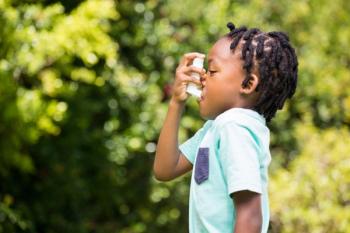
Welcome, Dr Linda Nield
If you are a regular reader of this journal, you've probablyenjoyed articles on a number of topics that werewritten by Dr Linda S. Nield. I'm pleased to announcethat Dr Nield has recently joined the editorial boardof Consultant For Pediatricians, and I would like toextend to her a warm welcome.
If you are a regular reader of this journal, you've probablyenjoyed articles on a number of topics that werewritten by Dr Linda S. Nield. I'm pleased to announcethat Dr Nield has recently joined the editorial boardof Consultant For Pediatricians, and I would like toextend to her a warm welcome.
The range of topics that Dr Nield has tackled overthe past several years-from clavicle fractures; to thedangers of trampolines; to colic, chronic cough, andasthma; to vaccines (she wrote thearticles that appeared in our Septemberspecial vaccine issue)-reflectsher broad experience as a practicingpediatrician and as a teacher of medicine.(The article on strabismusthat begins on page 17 of this issuealso carries her byline.)
Dr Nield earned her medicaldegree in 1990 at Dartmouth MedicalSchool and did her pediatric residencyat West Virginia University (WVU)School of Medicine. At that sameinstitution, she has served as an instructor,assistant professor, and adjunctassistant professor and currentlyis associate professor and attendingpediatrician at Ruby Memorial Hospital.When Dr Nield is not teaching at the medical school,she practices medicine in Morgantown at the Pediatricand Adolescent Group Practice and also at WVU CheatLake Physicians. In her spare time, she chairs theresident/medical student section of the West Virginiachapter of the American Academy of Pediatrics.
I'd also like to thank Deepak Kamat, MD, PhD-long-time editorial board member of this journal-for"introducing" us to Dr Nield. Drs Kamat and Nield hadworked together at WVU (before he left for Wayne StateUniversity in Detroit) where they began to collaborateon writing projects. They have subsequently coauthoreddozens of published articles. Dr Kamat describes hiscolleague as "a skilled writer, a 'fantastic' teacher, and anexceptionally devoted mother of 2 beautiful children."
Dr Nield's perspective as an academician and as apracticing pediatrician makes her well qualified to servewith the other distinguished physicians on our editorialboard as one of our key advisers. We will rely on DrNield's input to help us keep this journal focused onbringing you information that's concise, to-the-point, andwell illustrated and that you can put to good use in your daily practice.
To that end, we've added some new editorial featuresthat we hope you are enjoying. We've recently introducedan "x-ray quiz" in which pediatric radiologistEva Rubio, MD, helps you hone your skills at interpretingradiographs. And we've stepped up our coverage ofgenetic disorders: next month, we'll bring you the latestcase by Golder Wilson, MD, PhD, that feature's newseries editor. (Please see the e-Photo Quiz on page 43 fora sneak preview.) We are also publishing more cases involvingpossible medical conditionsthat can mimic signs of child abuse.
And we are constantly on thelookout for good teaching cases, likethe ones that appear in Photoclinic(page 38) or in our Case in Pointfeature (page 31). So . . . let me extendan invitation to all of you whoread and enjoythis journal.If you'vegot a case thatyou'd like topresent to the62,000 clinicians(pediatricians, pediatric nurse practitioners,and pediatric physicianassistants who receive this journalevery month), please e-mail us a word document withthe relevant details. Please send any images separatelyas JPEGs or TIFFs. You can send your cases to me ormy colleague, Linda Geisler. Our e-mail addresses areSKweskin@cmp.com and LGeisler@cmp.com.
Don't worry about formatting the case: once it hasbeen favorably peer reviewed, our editors will style thecontent and will send you a prepublication draft for yourreview and approval.
We hope you like what you are seeing in this journalevery month-and that when you next see a patientwhose case offers new clinical insights, you'll send usthe details.
Newsletter
Access practical, evidence-based guidance to support better care for our youngest patients. Join our email list for the latest clinical updates.








